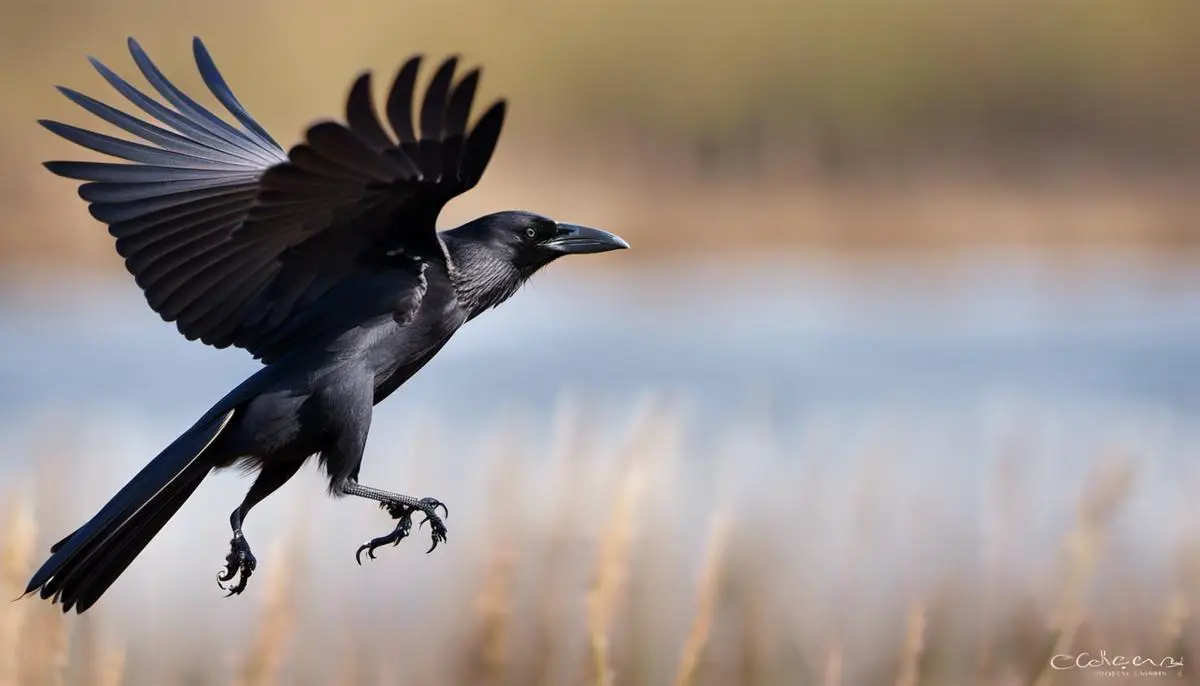When we marvel at the silhouette of a crow against the skyline, one cannot help but be intrigued by their mysterious and intelligent nature. Synonymous with folklore and culture, crows are one of the most adaptive species on our planet. Although their average lifespan is a matter of conjecture, the blend of physiological features, behavioral characteristics, and environmental influences play an interesting role. Through this exploration, we will delve deeper into the complex world of crows, shedding light on their physical attributes, lifespan variations based on their habitats, the contribution of their social structure and behavior to their lifespan, and the significant impact of human activities on their existence.
Physiology and Lifespan of Crows
Physiology and Anatomy of Crows
Crows belong to the family Corvidae, known for their intelligence and adaptability. They are medium to large-sized birds with strong beaks, sharp talons, and sturdy bodies, suited for various environments. They have an average body size of 16-21 inches and can weigh anywhere between 11.1 to 21.9 ounces. Their plumage is usually glossy black, which contains hints of purple or blue when illumined by sunlight.
Moreover, Crows have an excellent vision which allows them to recognize humans and threats. They possess strong muscular wings that grant them high flight speeds and mastery agility in the air. Their beaks are designed to consume a wide variety of foods, from grains and fruits to small animals, and their digestive system is adapted to accommodate this varied diet. One of the unique physiological features of crows is their brain size which is larger relative to their body, explaining their superior problem-solving and communication skills.
Genetics of Crows
The genetics of crows have also attributed to their longevity. They have a less aggressive aging process. Researchers have figured out that crow’s genetic age is consistently lower than its chronological age, and the difference between them grows the older the individual gets.
Lifespan and Survival of Crows
The lifespan of crows is linked to their adaptability and intelligence. Wild crows can live between 7-14 years, although recorded instances exist of crows living up to 20 years. In captivity, where threats from predation, disease, and harsh weather are largely eliminated, crows have been observed to live up to 30 years.
The mortality rates in the first year are significantly high due to predators and disease, but these decrease as a crow matures. Moreover, their intelligent behavior plays a significant role in their survival. Crows are known to use tools, have a memory for human faces, and even hold ‘funerals’ for their dead. This demonstrates their highly social nature and advanced problem-solving skills.
The lifespan of a crow is greatly impacted by an array of factors, stretching from the bird’s individual physical features to unique physiological makeup, as well as the environment in which it resides.
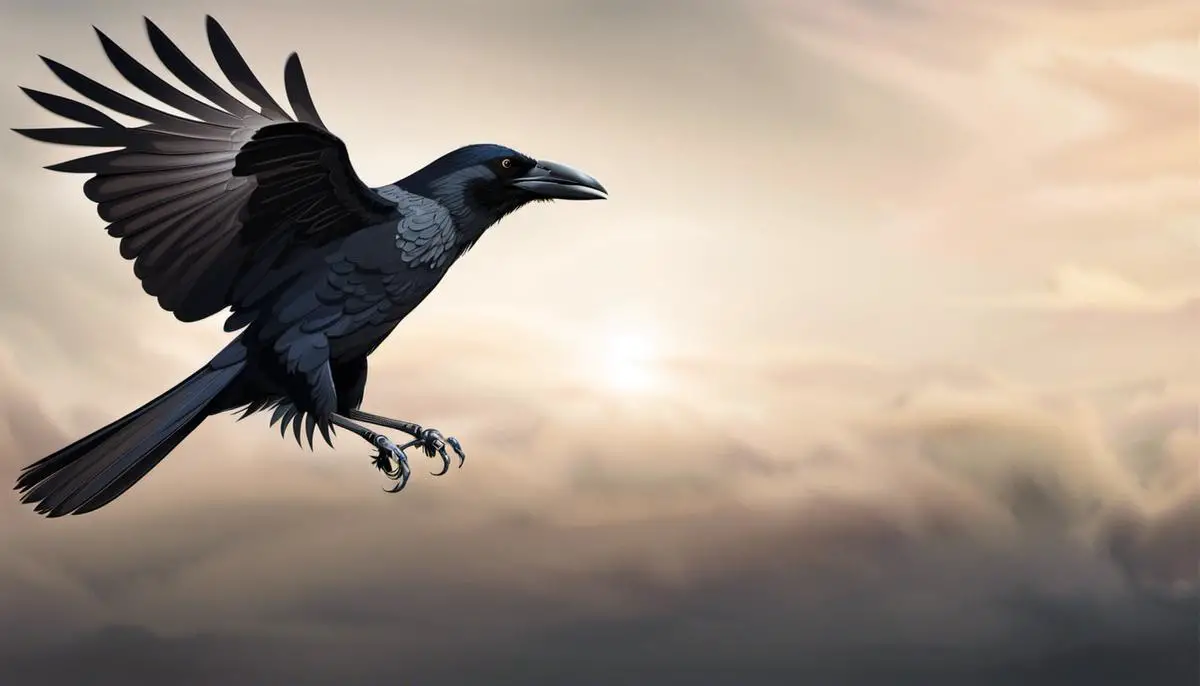
Crow’s lifespan in the wild vs in captivity
Lifespan of Crows in their Natural Habitat
Crows residing in the wild tend to have shorter lifespans in contrast to those living in captivity because of a variety of circumstances. Their life, more exposed to harsh conditions, puts them at increased risk from predators like hawks, raccoons, owls, and even human beings, thus resulting in greater susceptibility to death. Particularly, young crows who lack well-developed survival skills are more vulnerable in terms of predation. Moreover, the diet of wild crows, primarily scavenged food items or small prey, may not provide the same nutritional value as a captive diet, thus impacting their overall health and lifespan.
Additionally, the probability of disease or parasitic infection is heightened in the wild, which can significantly decrease their life expectancy. The close interaction within their socially structured groups can lead to a higher transmission rate of various diseases. Other factors like stress, due to the constant need to stay alert for dangers and protect their territories, can negatively affect their health over time. Nonetheless, the average lifespan of a crow in the wild typically falls between 6-10 years. However, there are rare instances of crows living up to 14-17 years.
Crow Lifespan in Captivity
Contrarily, their kin in captivity usually tend to live longer as they are shielded from many of the elements and threats present in the wild. In an ideal captive setup, crows are provided with a balanced diet that meets their nutritional needs, leading to better health and increased longevity. The crows in captivity are typically free from the threats of predators, and diseases or parasites can be promptly addressed by the caretakers. Their secured environment also lowers their stress levels, which can contribute to a higher life expectancy.
Furthermore, crows in captivity usually have access to regular veterinary care, addressing any health concerns promptly and effectively. They also do not have to face the challenging weather conditions and food shortages that might occur in the wild. However, the type and quality of care in captivity can vary widely, affecting their overall health and lifespan. Typically, captive crows have been reported to live anywhere from 20-30 years, and with exceptional care, some crows have lived up to 50+ years.
Interaction with Humans
Both in the wild and captivity, the interaction with humans can significantly impact the lifespan of crows. Crows are known to be intelligent birds, capable of recognizing individual human faces, adapting to urban environments, and even forging bonds with their human caretakers in captivity. However, negative encounters with humans in the form of hunting, traffic accidents, and loss of habitat can shorten the lifespan of crows in the wild.
On the flip side, the relationship with humans can also extend their lifespan in captivity, provided they are given proper care. Human caregivers who understand the specific needs of their crow companions, including a suitable diet, mental stimulation, and appropriate medical care, can enhance the wellbeing and longevity of the bird.
In the wild, the lifespan of crows can differ greatly due to various factors, including their adaptable nature and intelligence, as well as the specifics of their environment. In contrast, under human care, they generally exhibit a higher life expectancy. All in all, the survival and longevity of these birds are largely contingent on their living conditions and circumstances.
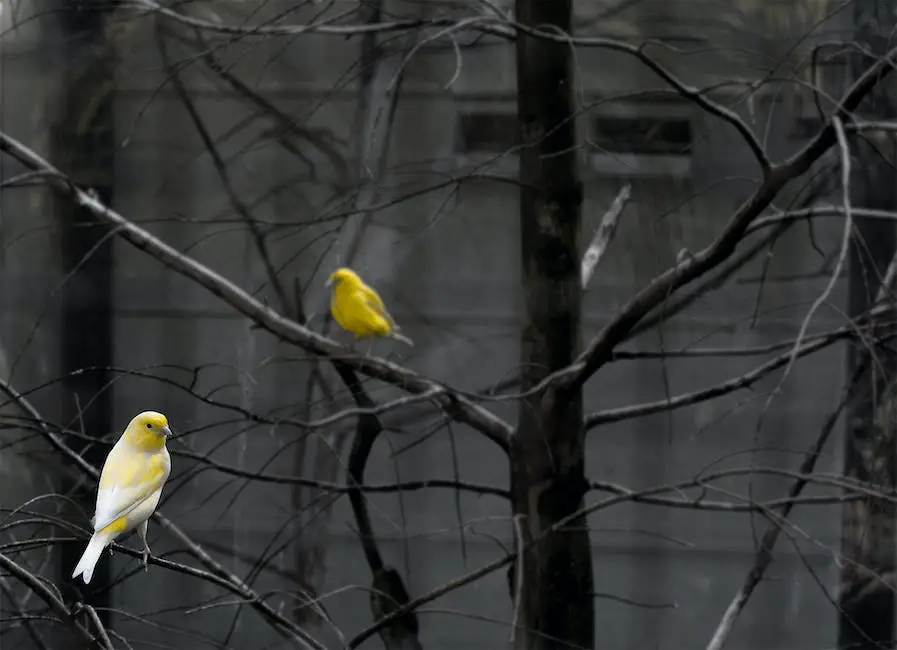
Role of behavior and social structure on lifespan
How Intelligence Contributes to Lifespan: The Notably Adept Crows
Known as one of the most intelligent bird species, crows have an uncanny ability to find solutions to obstacles they face in their environment. Their intelligence is evident in their capacity to use tools for acquiring food and quickly adapt to varied environments. Moreover, they have a distinctive means of alerting each other about potential threats – they produce a unique call when a predator is spotted, a signal which is understood and acted upon by the flock. These sophisticated survival strategies effectively help them avoid dangers, thereby facilitating a longer life span.
Mating Behaviors and Lifespan: Monogamous Crows
Regarding mating behaviors, crows are monogamous and remain with the same mate throughout their lifespan. This strong pair-bonding fosters a cooperative behavior between the couple, particularly in raising the young. When both parents contribute equally to gather food and protect the nest, the chances of survival for their offspring are elevated. As a result, with more offspring surviving, the overall lifespan of the crow species improves.
Impact of Social Interactions in Crow’s Lifespan
Crows exhibit complex social structures. They mostly live in large family groups comprising related individuals. These kin groups provide collective care to the young ones, share food sources, and join forces to protect each other against predators. This communal living promotes survival and can potentially increase the lifespan of individual crows. Moreover, crows were observed to engage in certain altruistic behaviors, like using their own food to appease hungry crows, even if they are not blood-related, showcasing their intricate social interactions.
Understanding the Crow’s Lifespan
The lifespan of a crow can vary significantly depending on a variety of factors. In their natural habitat, crows tend to live an average of 7-8 years, occasionally extending up to 20 years. However, when in a controlled environment, like captivity, crows have demonstrated an ability to live nearly six decades, up to an impressive 59 years. Factors such as environment, diet, and the overall quality of care received can heavily influence their longevity, in addition to their inherent social structures and adaptive behaviors.
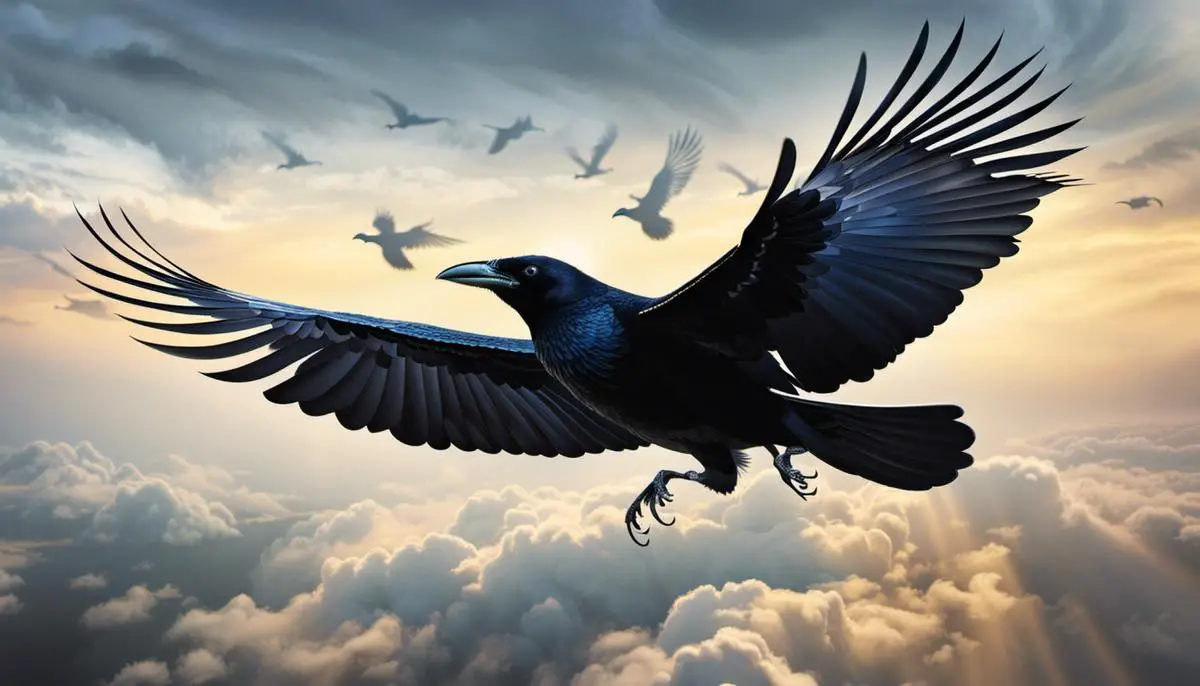
Human Impact on Crows’ Lifespan
Human Influence on the Lifespan of Crows
Interestingly, human activities, such as urbanization and pollution, along with hunting, have a significant impact on the lifespan of crows. Urban environments, rich with food and suitable nesting sites, tend to attract a substantial crow population. Consequently, urban dwelling crows tend to outlive their rural counterparts, largely due to lesser predation and greater food availability. However, this advantage also comes with its own set of hazards, as urban risks like vehicular accidents or pest control methods can also have adverse effects on the crows’ lifespan.
Impact of Pollution
Pollution also plays a role in determining a crows’ lifespan. The exposure to contaminants, such as pesticides, can lead to various health problems and, eventually, a shortened lifespan. Air pollution, especially particulate matter, can affect a crow’s respiratory system, impeding its ability to survive and thrive.
Effect of Hunting on Crow Lifespan
Hunting, whether for sport or population control, is another human activity affecting crows’ lifespans. In many regions, crows are considered pests due to their impact on agriculture, leading to hunting and trapping events that significantly decrease the average lifespan of these intelligent birds.
Conservation Efforts to Protect Crows
Despite these adversities, various conservation measures have been put in place to protect crows. Many locations have implementing stricter hunting regulations or completely banned the practice, helping to increase the average life span of these creatures. Other measures include efforts to reduce pollution and creating safe habitats in urban areas to help crows adapt and live safely in these environments.
Proposals for Future Initiative
Looking forward, several proposals could further enhance crows’ survival and longevity. These include stricter pollution controls, creating more crow-friendly urban environments, and establishing stronger animal protection regulations. These efforts would require the cooperation of city planners, law enforcement, environmental agencies, and the general public to create a safe and beneficial habitat for crows, ultimately promoting longer and healthier lives for these unique and intelligent birds. Genomic research studying the adaptation and evolution of urban crows may additionally provide useful insights to guide these initiatives.
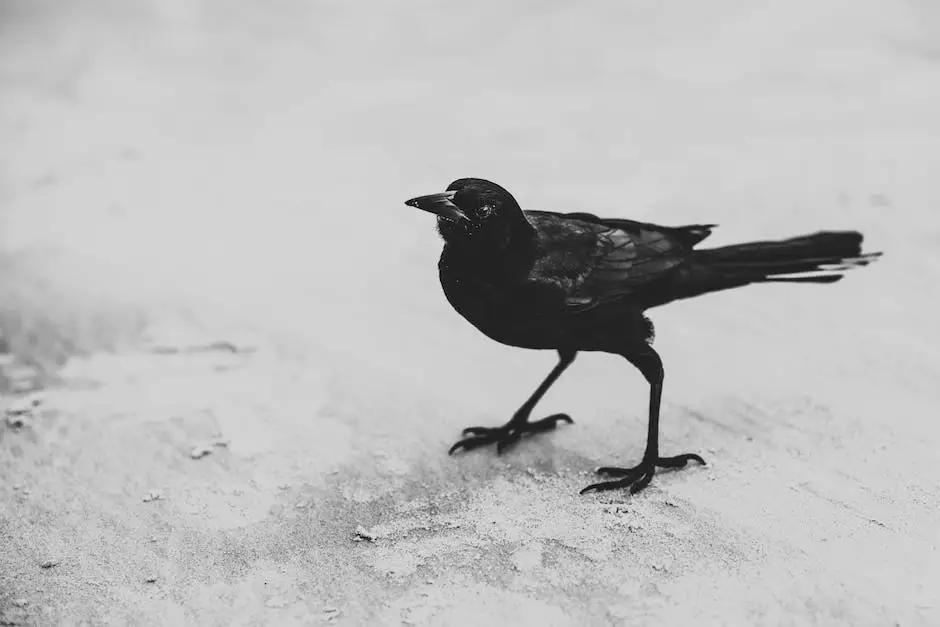
As we trace back through our exploration, it is clear that there’s more to the crow than meets the eye. Their inherent physiological features, coupled with their adaptive behavior, proves their evolution as a species over time. Life in captivity versus the wild throws up interesting contrasts,namely in terms of life expectancy largely driven by their ability to combat disease and predators, among other challenges. The complex social structure of crows further underlines their ability to survive and the impact of their lifestyle on their lifespan. Unmistakably, human activities continue to impact their existence, calling attention to the pressing need for conservation measures. The journey into understanding these peculiar creatures remains an ongoing exploration that will likely continue to stir curiosity and seek answers in the future.
Lifespan of Crows: FAQs
Q. What is the lifespan of a crow?
Crows have an average lifespan of 7-8 years in the wild, although some have been known to live up to 20 years or more in captivity.
Q. Do crows mate for life?
Crows do not mate for life, but they do form long-term pair bonds with their mates that can last for several years.
Q. When do crows reach sexual maturity?
Crows typically reach sexual maturaffect a crownd 2-3 years of age.
Q. What are some factors that can affect crow lifespan?
Several factors can affect crow lifespan, including predation, disease, habitat loss, and human activity such as hunting and habitat destruction.
Q. How do crows care for their young?
Crows are highly social birds and both parents are involved in caring for their young. They build nests together, incubate the eggs, and feed and protect their offspring until they are able to fend for themselves.
Q. What do crows eat?
Crows are omnivorous and will eat a wide variety of foods, including insects, small mammals, fruits, seeds, and carrion.
Q. Are crows protected under the law?
Crows are protected under the Migratory Bird Treaty Act, which makes it illegal to harm, kill, or capture them without a special permit. However, they are considered pests in some areas and may be subject to control measures such as hunting and trapping in certain situations.

